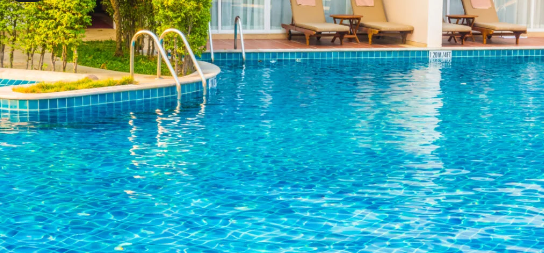Imagine this scenario: It’s the peak of summer, the sun is shining, and you’re ready for a refreshing dip in your pool. You go to top off the water, or perhaps your automatic filler kicks in, but nothing happens. Or worse, the water level starts dropping inexplicably. A failing pool water supply can quickly turn a relaxing day into a stressful one. Whether it’s a sudden rupture, a persistent leak, or an issue with your water source, understanding emergency solutions for your pool water supply is crucial for every pool owner.
A consistent and reliable pool water supply is the lifeblood of your swimming pool. It’s essential for maintaining proper water levels, supporting your filtration and circulation systems, and ensuring water chemistry remains balanced. Without it, your pump can run dry, leading to costly damage, and your water quality can rapidly deteriorate, inviting algae growth and other undesirable issues. Recognizing the signs of a failing pool water supply and knowing how to react can mitigate significant problems.
One of the most common failures is a sudden drop in water level, indicating a leak in your pool water supply or the pool structure itself. Before panicking, perform a bucket test. Place a bucket of water on a step of your pool, ensuring the water level inside the bucket is the same as the pool’s. Mark both levels. After 24 hours, compare the two. If the pool water level has dropped significantly more than the bucket’s, you likely have a leak. While not a permanent fix, adding water manually with a garden hose can be an immediate emergency solution to prevent your pump from running dry. This is a temporary measure to protect your equipment while you identify the source of the leak.
If the issue is with your dedicated pool water supply line – perhaps a burst pipe leading from your house to the pool – the immediate priority is to shut off the water supply to that line to prevent further flooding and water waste. Locate the shut-off valve for your pool’s water line, which is usually near where the line connects to your main house plumbing or an outdoor spigot. Once shut off, you’ll need to call a professional pool technician or plumber to assess and repair the damage. In the meantime, you’ll have to manually fill your pool using an alternative source, such as a garden hose connected to a different spigot, or even consider having water delivered by a bulk water service if the issue persists for an extended period. This can be costly, but it’s an emergency measure to keep your pool functional.
Another scenario involves your automatic pool water supply system malfunctioning, either overfilling or underfilling your pool. If it’s overfilling, immediately turn off the water supply to prevent flooding and excessive water waste. The float valve or sensor in your autofill system may be stuck or damaged. If it’s underfilling, check for blockages in the fill line or a malfunctioning sensor. Manually topping off the pool is the emergency fix while you troubleshoot or await professional repair. Sometimes, simply cleaning the sensor or float can resolve the issue.
What if your general household water supply is interrupted, impacting your pool water supply? This could be due to municipal issues, a well pump failure, or a frozen pipe in your home. In such cases, your options are more limited. Conserve the water you have in your pool by minimizing evaporation (using a pool cover) and avoiding backwashing the filter unless absolutely necessary. If the water outage is prolonged, you might need to consider bringing in water from an external source via a water delivery service. While not ideal, it’s an emergency lifeline to prevent your pool from becoming a stagnant swamp.
Finally, consider power outages. While not directly affecting your pool water supply, a power outage will shut down your pump and filter, impacting water circulation and potentially leading to water quality issues. If the outage is short, it might not be a major concern. For longer outages, consider using a generator to power your pump for a few hours a day to maintain circulation, or invest in a battery-backup system for critical components.
Dealing with a failing pool water supply can be stressful, but by understanding these emergency solutions, you can minimize damage and keep your pool operational. Always prioritize shutting off the water source in case of leaks or overfilling, and be prepared to manually add water if your automated system fails. Prompt action and a clear understanding of your pool water supply system can save you significant time, money, and hassle in an emergency.





